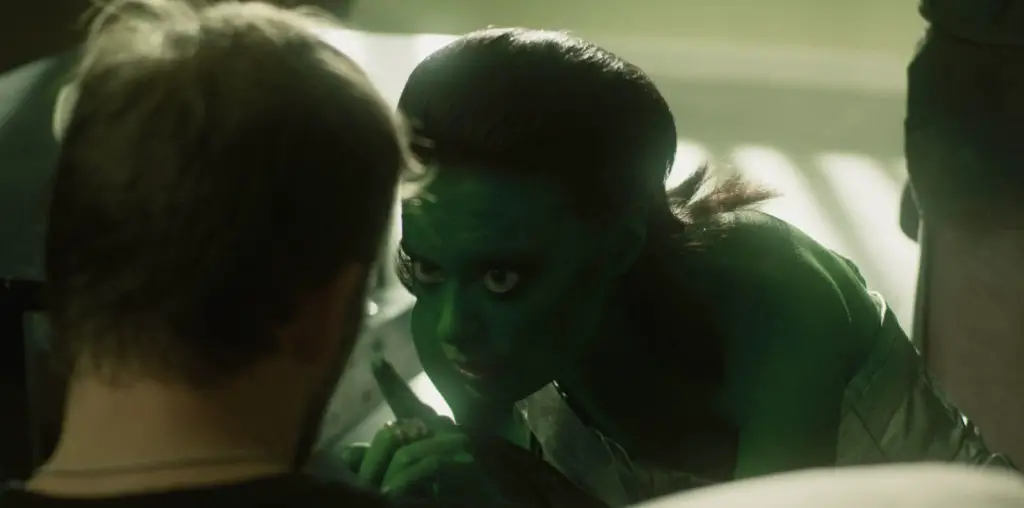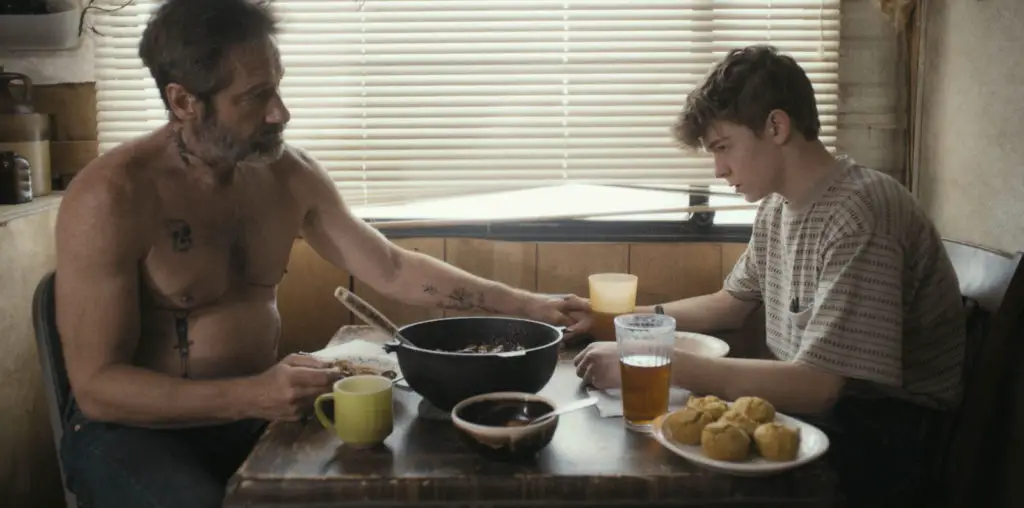
BOOTLEG FILES 352: “The Deep Blue Sea” (1955 British feature starring Vivien Leigh and Kenneth More).
LAST SEEN: The full film is available in an unauthorized YouTube posting.
AMERICAN HOME VIDEO: None.
REASON FOR BOOTLEG STATUS: It has not been available for commercial release in home entertainment channels.
CHANCES OF SEEING A COMMERCIAL DVD RELEASE: It may emerge due to a remake that is set for 2011 release.
Earlier this month, The Hollywood Reporter published an item that Rachel Weisz is in production on Terence Davies’ film “The Deep Blue Sea.” Some people may have incorrectly assumed that this is a remake of Renny Harlin’s 1999 science-fiction flick “Deep Blue Sea.” Instead, this new endeavor is a cinematic adaptation of a 1952 drama by Terrence Rattigan.
What The Hollywood Reporter didn’t mention is that this is actually the second film version of “The Deep Blue Sea.” The first version came out 55 years ago and it starred one of the most vibrant yet elusive icons of film history, Vivien Leigh. That film, however, has been out of circulation for many years and can only be seen today in a crummy bootlegged print. How did that strange situation come about? Well, funny you should ask…
“The Deep Blue Sea” tells the story of a middle-aged woman in a thorny love triangle. Hester Collyer is the wife of titled judge, but she leaves him for the love of a raffish (and much younger) ex-RAF pilot. But Hester’s new life isn’t what she anticipated – her flyboy is a heavy drinker who can barely scrape up enough money to pay their rent in a cheap London boardinghouse. After a failed suicide attempt, Hester is reunited with her husband, and he is more than willing to forgive and forget. However, she is still beholden to her lover – even though it is too obvious that he lacks the maturity and stability to provide for her needs.
“The Deep Blue Sea” originally opened in London’s West End with Peggy Ashcroft as Hester and Kenneth More as her pilot-lover. The raw aspects of Hester’s condition had a serious impact on Ashcroft, who later stated that the role made her feel as if she was walking around on stage naked. The commercial success of the show enabled it to be transferred to Broadway, with Margaret Sullavan taking the role of Hester. However, New York audiences were cold to the production, which had a brief and desultory run.
Nonetheless, British film producer Alexander Korda felt that he could spin box office gold from this property. He hired Rattigan to adapt his play as a film and brought over Hollywood director Anatole Litvak to helm the project. But casting the key role of Hester was a challenge: Ashcroft was a British theater star who was unknown to film audiences, while Sullavan quit film acting in 1950 and was only interested in pursuing theatrical work. Supposedly, Korda tapped Marlene Dietrich for the part, but the legendary movie star realized she would be miscast and wisely rejected the offer.
At this point, Vivien Leigh was approached. Leigh had not been on screen since her Oscar-winning performance in “A Streetcar Named Desire” in 1951 – she was signed to appear in the 1954 “Elephant Walk,” but was forced to withdraw due to ill health. While Leigh was an occasional cinematic presence – she only appeared in eight films between her 1939 breakthrough in “Gone with the Wind” and her 1967 death – she had enough star power to carry a major film. Korda had also hoped that Leigh’s then-husband, Laurence Olivier, would co-star in “The Deep Blue Sea,” but he was involved in creating his film version of “Richard III” and passed on the project. Instead, Emlyn Williams was cast as the spurned husband, while Kenneth More recreated his London stage role.
So what went wrong? For starters, Rattigan’s screenplay stuck too closely to his stage play. Too much of the action was centered in Hester’s boarding house flat – it is supposedly a cheap room in a crummy establishment, but in the film it is large enough to host a Cirque du Soleil production. Occasionally, the film goes out into the world – there is a flashback sequence at a Swiss ski chalet and a few quick glimpses of London’s streets – but these peeks into reality only magnify the film’s devotion to theatricality.
It also doesn’t help that most of the cast is so wired that it seems as if they are playing to the last seat in the balcony. This is especially the case in the supporting performances, where the actors try to beef up their presence by making spectacles of themselves. Thus, Moira Lister’s nosy neighbor, Dandy Nichols’ bedraggled landlady and Miriam Karlin’s barmaid chew at the scenery with undisguised gusto. Even Kenneth More gets into the act, tearing around in an overcooked (yet underwhelming) portrayal of excess inebriation.
In contrast, Leigh doesn’t even bother to give a performance. Anyone who remembers the depth and scope of Leigh’s on-screen canon will be shocked by the icy indifference she displays here. Leigh’s work goes wrong from the very beginning – she presents Hester’s failed suicide as if she was awakening from an unpleasant nap – and she never gets into her groove. Her non-acting throws the entire film out of kilter – it is impossible to imagine that she is a woman that lives by her carnal emotions and is willing to jettison a cozy aristocratic lifestyle in order to be physically and financially humiliated by an unworthy lover.
However, “The Deep Blue Sea” made the mistake of acquiescing to the film censorship mandates of its time. In the original Rattigan work, the unsatisfactory emotional and sexual nature of Hester’s marriage was given more depth. In the film, Hester’s husband is simply seen as a bore. The censors also obscured the story behind a major secondary character, a physician whose medical license was revoked. The character lost his license due to his arrest and jailing for being homosexual – yes, being gay was a criminal offense in England back then – but the film only alludes to a jail term without explanations. (Nor will Eric Portman’s stiff and gruff performance set off anyone’s gaydar.) This character and Hester are supposed to bond as outsiders to their surroundings, but that doesn’t happen in the film, and his late presence as an advice-giver seems intrusive rather than helpful.
If this wasn’t bad enough, “The Deep Blue Sea” was shot in the widescreen CinemaScope process, which only magnified all of its flaws. Although reviews were most favorable and More won the Best Actor Award at the Venice Film Festival and received a BAFTA nomination, the film was a commercial flop.
To date, there has been no official home entertainment release of “The Deep Blue Sea.” I don’t believe that it has been televised in many, many years – the only bootleg copy floating around is from a well-worn pan-and-scan 16mm print – and I have no idea why it has remained unavailable for so long.
However, I suspect that this old flick will probably resurface once the Rachel Weisz version gets ready for its theatrical release. But even if it does appear, don’t waste your time on it – this is one film that deserves to be sunk in the deep blue sea.
IMPORTANT NOTICE: The unauthorized duplication and distribution of copyright-protected material, either for crass commercial purposes or profit-free s***s and giggles, is not something that the entertainment industry appreciates. On occasion, law enforcement personnel boost their arrest quotas by collaring cheery cinephiles engaged in such activities. So if you are going to copy and distribute bootleg videos and DVDs, a word to the wise: don’t get caught. Oddly, the purchase and ownership of bootleg videos is perfectly legal. Go figure!

